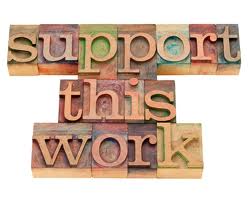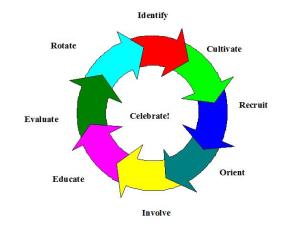Last week I was on the road working with clients. One evening when I was out to dinner, a revelation about your fundraising program struck me like a bolt of lightning while in the restroom of a restaurant. Yes, you read that last sentence correctly. I was thunderstruck in the bathroom. Inspiration came in the form of a little sign sitting by the sink.
This is kind of what that sign looked like:
I’ve been chewing on this question for a week now, which tells me that there is a good blog post somewhere in there. 😉
Failure and your fundraising plan
The first flurry of thoughts that ran through my head pertained to many fundraising programs I’ve seen throughout the years. Here are just a few questions I find myself asking about many agencies’ annual resource development plans:
- Why are they running so many special events?
- Why aren’t they measuring return on investment (ROI) on each of their events and campaigns?
- Why aren’t they evaluating and critiquing each event and campaign?
- Why aren’t they innovating and trying new things (e.g. email, social media, etc)?
I’m now wondering if the answer to these questions is that we’re afraid of failure, and it is just easier to keep doing the same thing over and over again. After all, if we evaluate and ask questions, then shouldn’t we “do something” about those things that don’t look so good?
As for innovation and trying new things, there has to be all kinds of “fears” associated with venturing off into the great unknown. Right?
I know that talking about those things we’re afraid of is difficult for many of us. It is this simple truism that keeps countless counselors, therapists and psychologists employed every year. However, I encourage you to take 30 seconds our of your busy day right now and consider these questions and the possibility that your fundraising program is in the grip of fear-based decision-making by staff, fundraising volunteers, and board members.
What would you do . . . if you knew?
What an interesting question to ponder. Dontcha think?
What would I do, if I knew, I could not fail?
Let me step off that cliff first. The following is a list of things (as it pertains to non-profit management and fundraising) I thought of in 30 seconds:
- I would call the top 10 most influential people in town and ask them to join my board or get involved in some aspect of my fundraising program.
- I would kill every special event fundraiser that was older than 5 years old and replace it with something new and fun.
- I would calculate ROI on every event and campaign and stop doing everything that didn’t bring me at least a 75% return (and I’m talking about using both direct AND indirect costs in that calculation)
- I would find the time to add an ePhilanthropy aspect to my annual fundraising plan that includes blogging, social media, email and website (and I’d add a robust evaluation component to this program).
Now it is your turn. Please take a few second to contemplate the question at hand. What would you do? Once you have one thing in your head, please scroll down and share it in the comment box below. Let’s inspire each other today.
Here’s another thought. Why not start off your next board meeting and all of your upcoming committee meetings with this question. You might just be surprised by what your volunteers tell you. If you do, I hope you’ll circle back around to this post and share what they said.
Here’s to your health!
Erik Anderson
Founder & President, The Healthy Non-Profit LLC
www.thehealthynonprofit.com
erik@thehealthynonprofit.com
http://twitter.com/#!/eanderson847
http://www.facebook.com/eanderson847
http://www.linkedin.com/in/erikanderson847

















 The single most important thing an organization can do to ensure its sustainability is develop its board. You may be thinking — “No Dani, it’s staff, leadership, programming, impact or fundraising” — and all of those things are important, but none of them can happen the way they should without a strong board. Everything flows from a strong board of directors.
The single most important thing an organization can do to ensure its sustainability is develop its board. You may be thinking — “No Dani, it’s staff, leadership, programming, impact or fundraising” — and all of those things are important, but none of them can happen the way they should without a strong board. Everything flows from a strong board of directors.


